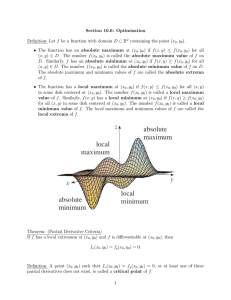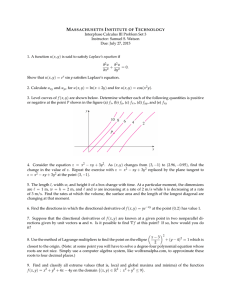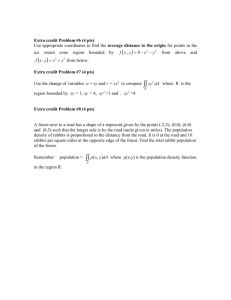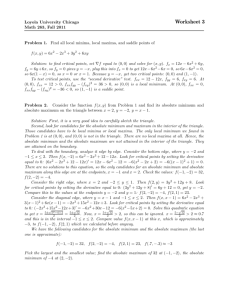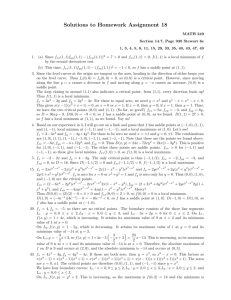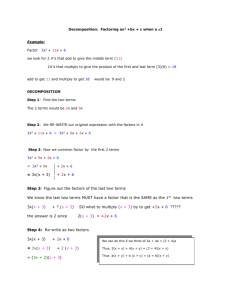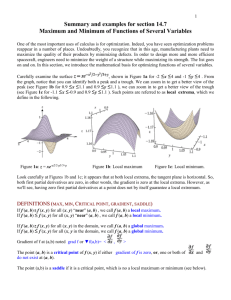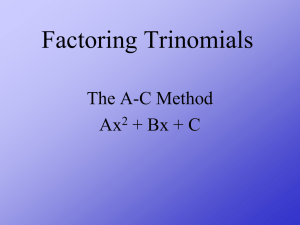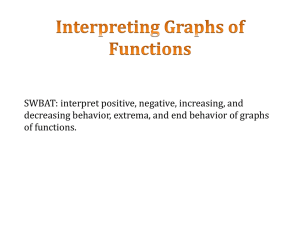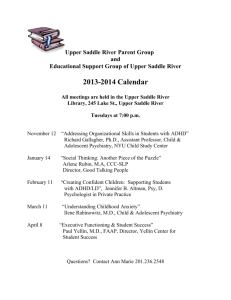12.7Extreme
advertisement
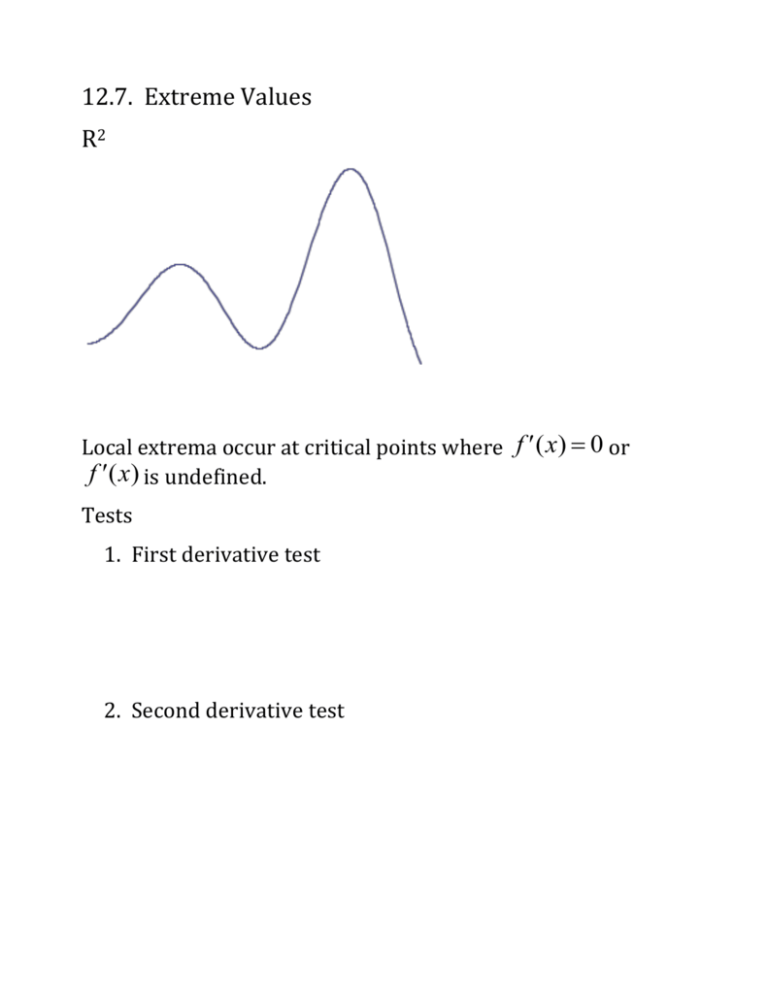
12.7. Extreme Values R2 Local extrema occur at critical points where f (x) 0 or f (x) is undefined. Tests 1. First derivative test 2. Second derivative test R3 r Local extrema occur at critical points where f (x,r y) 0 or f (x, y) is undefined. Note: when f (x, y) 0 , fx = 0 and fy = 0 simultaneously. A saddle point is a point (a, r b, f(a, b)) whose tangent plane is horizontal ( f (x, y) 0 ) and f has both higher and lower function values on any region containing (a, b). Local extrema = local maxima, local minima, and saddle points. Second Partials Test r Let z = f(x, y) and suppose f (a,b) 0 . Define D(a, b), “the discriminant of f”, as follows: D(a, b) = fxx(a, b)fyy(a, b) – (fxy(a, b))2 1. If D(a, b) > 0 and fxx(a, b) > 0, then f has a local minimum at (a, b) 2. If D(a, b) > 0 and fxx(a, b) < 0, then f has a local maximum at (a, b) 3. If D(a, b) < 0, then f has a saddle point at (a, b) 4. If D(a, b) = 0, then it’s inconclusive Ex. f(x, y) = x4 + y3 + 32x – 9y Ex. f(x, y) = xy2 – 6x2 – 3y2 Do: Find all local extrema for f(x, y) = 6x2 - 2x3 + 3y2 + 6xy Absolute Maxima and Minima If f is a continuous function on a closed and bounded region R, then f has an absolute maximum and absolute minimum. The absolute maximum and minimum will always be at a critical point or on the boundary. R2 R3 Steps: 1. 2. 3. 4. Find the critical points and list them. List the end points or corners Find the critical points on the boundaries Find the function values: the largest is the absolute maximum and the smallest is the absolute minimum. Ex. Find the absolute maximum and minimum for f(x, y) = x4 + y3 + 32x – 9y on the region -2 ≤ x ≤ 0 and -2 ≤ y ≤ 0 Ex. f(x, y) = xy2 – 6x2 – 3y2 on the triangular region with vertices (1, 1), (-1, 1), and (-1, -3). Ex. f(x, y) = xy2 – 6x2 – 3y2 on the region bounded by y = x2 and y = 1. Ex. f(x, y) = x + y2 on the region bounded by x2 + y2 ≤ 1.

